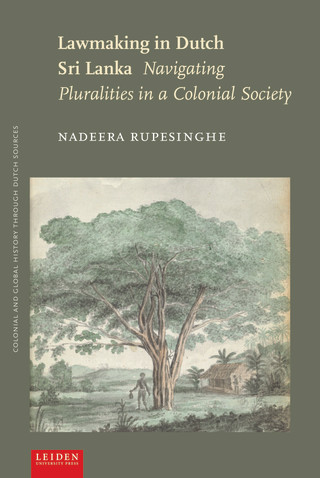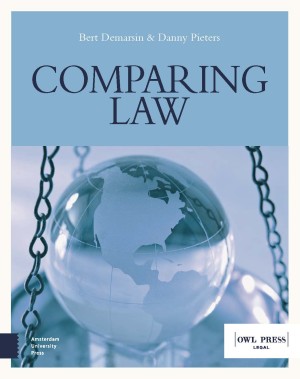

- Titel
- Comparing Law
- Auteurs
- Bert Demarsin
- Danny Pieters
- Prijs
- € 56,95
- ISBN
- 9789048559879
- Uitvoering
- Paperback
- Aantal pagina's
- 332
- Taal
- Engels
- Publicatiedatum
- 22 - 02 - 2023
- Afmetingen
- 14 x 21.5 x 2.7 cm
- Categorie
- Law
- Discipline
- Sociale en Politieke Wetenschappen
- Voorbeeld
- Download introductie
Bert Demarsin, Danny Pieters
Comparing Law
De onderstaande tekst is niet beschikbaar in het Nederlands en wordt in het Engels weergegeven.
Our society has never been so internationally connected. Companies operate worldwide, retail shelves are filled with products from far and wide, people travel like never before and maintain contacts from Afghanistan to Zimbabwe. Distant countries have never been so close. Anyone who is practising law today cannot escape this and will increasingly be confronted with cross-border legal issues. Therefore, today’s jurists are expected to have knowledge of their own legal system as well as the law of foreign countries. For this reason, comparative law is integrated today in nearly every law programme at university.
Comparing Law offers you an introduction to comparative law. What is comparative law? Why do we compare law and, above all, what methodology does the discipline adopt? These and many other questions are discussed in Part 1 on law comparison as methodology and science. Further parts introduce you to the law of some key jurisdictions.
A selection of European countries, such as the UK, France and Germany are covered along with Belgium and the Netherlands. Not only global players, such as the United States, Russia, China, Japan, India and Brazil, are highlighted, but the law of Israel, Islamic law and African legal systems are presented as well. Last but not least, comparative law in practice is also illustrated by approaching a number of topics – both of public law and private law – in a comparative way.
Danny Pieters and Bert Demarsin help the reader to understand and appreciate how the law differs from country to country. Enjoy this fascinating and comparative journey of discovery through the world and its legal systems.
Comparing Law offers you an introduction to comparative law. What is comparative law? Why do we compare law and, above all, what methodology does the discipline adopt? These and many other questions are discussed in Part 1 on law comparison as methodology and science. Further parts introduce you to the law of some key jurisdictions.
A selection of European countries, such as the UK, France and Germany are covered along with Belgium and the Netherlands. Not only global players, such as the United States, Russia, China, Japan, India and Brazil, are highlighted, but the law of Israel, Islamic law and African legal systems are presented as well. Last but not least, comparative law in practice is also illustrated by approaching a number of topics – both of public law and private law – in a comparative way.
Danny Pieters and Bert Demarsin help the reader to understand and appreciate how the law differs from country to country. Enjoy this fascinating and comparative journey of discovery through the world and its legal systems.
Auteurs
Bert Demarsin
Bert Demarsin (1980) is professor at the University of Leuven. He teaches Comparative Law as well as Introduction to Law and Legal Methodology in the bachelor’s programme. His main research area is art and cultural heritage law, which he examines from a comparative law perspective.
Danny Pieters
Danny Pieters (1956) is professor emeritus at the University of Leuven. He taught both comparative law and social security law. He has published numerous articles and books in both disciplines. He also fulfilled political mandates in the past, including president of the Belgian Senate. Today, he is a judge at the Belgian Constitutional Court and a member of Academia Europeae.



